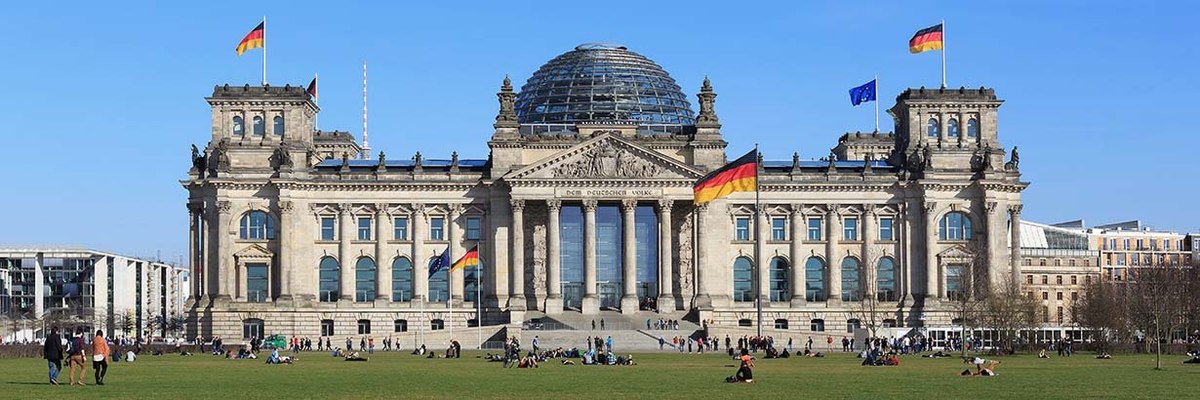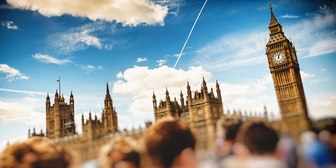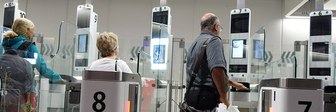This Sunday, Germans will head to the polls in a snap federal election called after the ‘traffic light’ coalition of the Social Democratic Party (SDP), the Greens, and the Free Democratic Party (FDP) sensationally collapsed in late-autumn last year over major disagreements on fiscal and financial policy.
FDP leader, Christian Lindner, and incumbent German chancellor, Olaf Scholz, came to final blows on 6 November in a bilateral meeting which ended with Scholz dismissing Lindner from his post as finance minister. With that, the starting gun for this coming Sunday’s election was fired.
This is only the fourth early election in the country’s history (after 1972, 1983, and 2005). Consequently, the campaign has been a short one compared to regular, on time, German elections, with parties, politicians, the media, and pollsters typically having months and months to prepare for a set date.
Much has changed in Germany since the last time voters headed to the polls in 2021. Back then, the country was in the twilight of the Covid-19 pandemic. Then challenger Olaf Scholz was seen as a calm and secure figure who was ready to take over the mantle from the record-holding four-time election winner, Angela Merkel.
Nowadays, public perceptions of Chancellor Olaf Scholz are incredibly negative. No fewer than 77% of Germans told us last month that they disapproved of his government’s record to date, with just 15% saying they approved.
His challenger for the top position in German politics is Friedrich Merz, leader of the Christian Democrat and Christian Social Union (CDU/CSU). In our final MRP model released today, we have the Union streets head of the SPD at 30% of the vote compared to 16%, and a projected 220 seats in the Bundestag (German parliament) compared to 115.
While that represents a solid gain for the Union compared to their 24% of the vote in 2021 (seat totals are not comparable given the total number of seats in the Bundestag is now different), the largest gains in this election will be made, we project, by the far-right AfD. They will increase their share of the vote from 10% in 2021 to 20% now.
We also project that notable gains will be made by the far-left Die Linke (The Left) party versus 2021, in what is a major turnaround for them compared to our first MRP model.
This shift in momentum, along with the expected-doubling in AfD vote share, the cooperation between the Union and the AfD to pass an immigration-related motion in parliament, and the struggles of the incumbent SPD, has really been one of the only stories in town in what has been a fairly stable and relatively uneventful election campaign.
Our central projection in our first MRP on 17 January was that Die Linke would drop of the Bundestag altogether, failing to reach either the 5% national vote threshold or the three constituency wins required to qualify for parliamentary representation (Germany’s electoral system gives voters two votes – one for ‘direct mandates’ representing their local constituency, and a second ‘regional list’ vote from which overall parliamentary seat allocations are calculated).
In fact, Die Linke have gone from an estimated 2.9% of the national vote in mid-January to no less than 7.5% now.
We’ve seen the opposite trend however for Germany’s newest political party, the ‘Alliance for Sahra Wagenknect’ (BSW) – a former Die Linke politician who split out from the party and former her own parliamentary grouping a little over a year ago. Her campaign, as with her party, has been a highly personalised one, with her face featuring heavily on party literature and posters occupying the letterboxes and lampposts of Germany.
In so doing, Wagenknect hoped to lean into her relative popularity and high name recognition among many, mostly left-leaning, groups. But our MRP projections suggest she and her party may not have been successful in this aim.
In our first MRP, we projected BSW to be on 6% of the vote, qualifying them for around 45 seats in the Bundestag. Our mid-campaign update MRP on 6 February had them on 5.4%, and approximately 40 seats. In our final MRP, their projected vote share has dropped to 4.6%, meaning they drop out of the parliament altogether our central projection.
The FDP on the other hand have not once made it into the Bundestag in the central projections from any of our three models, moving from an estimated 4.5% of the vote in the first model to 4.1% in the second and now 4.5% again in the final projection.
But within the MRP estimations there are of course a wide range of possibilities and probabilities, such is the way that these models work by assuming and then simulating all manner of different combinations and constructions of voter behaviour and turnout.
As such, while we are very confident that Die Linke will make the parliament, there is a small probability (around 3%) that they do not. Similarly, the MRP model suggests that there is around a 10% chance that the FDP will make the Bundestag, and a roughly 20% chance that BSW will do the same.
Therefore, for Mertz and the Union, while topping the polls looks assured, building a governing coalition may be tricky depending on the number of parties who do in fact reach the threshold (either by national votes, or constituency wins) and enter the Bundestag. This is particularly the case since German political parties have each vowed to continue the “lockout” of the AfD from government, despite their rise in the polls and potential occupying of around 150 seats in the parliament.
Currently, the YouGov MRP projects that each of the Union, the SDP, Greens, the AfD, and Die Linke, will make the 5% vote share threshold necessary to enter the Bundestag. Each of the five would then split all 630 seats proportionally between them, and Mertz could easily construct a two-party coalition with the SPD and possibly even the Greens.
Possible Bundestag composition in a five-party parliament with parties winning approximately the number of votes that our MRP model implies
But in a scenario where both BSW and FDP also join the aforementioned five in the Bundestag, Mertz will have to look to include two additional parties in his coalition.
A seven-party parliament (or rather eight, if we include the protected minority South Schleswig Voters' Association party) makes coalition-building maths very difficult versus a five or even six-party parliament.
In this possible outcome, a ‘grand coalition’ of the Union and SPD would struggle to reach the 316 seats required for a parliamentary majority. The Union and Greens together would be no-where near that mark. As such, a third party would need to be involved to create a viable government.
This is a situation the Union will be keen to avoid, to the extent that they can or else they risk facing a similar fate to the outgoing Scholz administration – tricky, three-way negotiations over every element of government policy, which could ultimately result in another collapse and another snap electoral contest for Germans to contend with.









